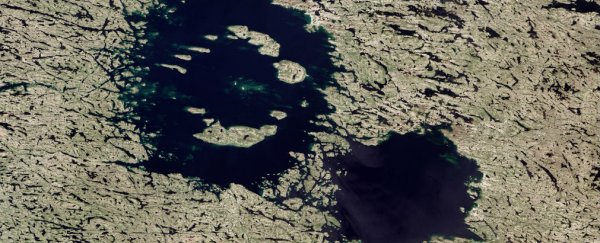Chinese lunar rover Yutu-2 has rolled over a strange mystery on the far side of the Moon. At the bottom of a small, recent impact crater, the rover found a shiny unknown substance the Chinese space agency described as a "gel with a mysterious lustre".
Although Chinese scientists have not yet revealed what it might be, the best guess from external scientists, according to Space.com, is that the material is glass that formed in the heat of the impact that left the crater.
On July 28 - three days after the start of the two-week lunar day - the Yutu-2 science team at the Beijing Aerospace Control Center were preparing to power down the rover for a 'midday nap', a process that prevents the delicate machinery from overheating when the Sun is directly overhead.
But team member Yu Tianyi noticed something unusual in the crater while checking a panorama photographed by Yutu-2. So the researchers kept the rover awake just a little bit longer, rolling it over to the crater for a better look.
There, they found a glistening substance. According to the rover's drive diary, this material differed from the surrounding regolith in shape, colour and texture. (Sadly, they have released no photographs of it just yet, but you can see the crater itself in the images here.)
 This photo shows the scale of the crater. (China National Space Administration)
This photo shows the scale of the crater. (China National Space Administration)
The rover was put down for its nap after checking out the crater, and reawakened to make the most of the afternoon sunlight. During this time, it examined the crater using its Visible and Near-Infrared Spectrometer (VNIS), which analyses the light reflecting off surfaces to determine their chemical composition.
We still don't have answers from that analysis, but the surface of the Moon is quite dry, so it's possible the stuff found by the rover is more of a hardened molten material than a squishy, jelly-like substance. Which, even if they weren't on the near side, would rule out a pile of tardigrades.
Yutu-2 went back to sleep on August 7 for the duration of the lunar night, since it runs on solar power. It awoke on August 25 for the next lunar day, and has been continuing its journey west in search of new discoveries.
